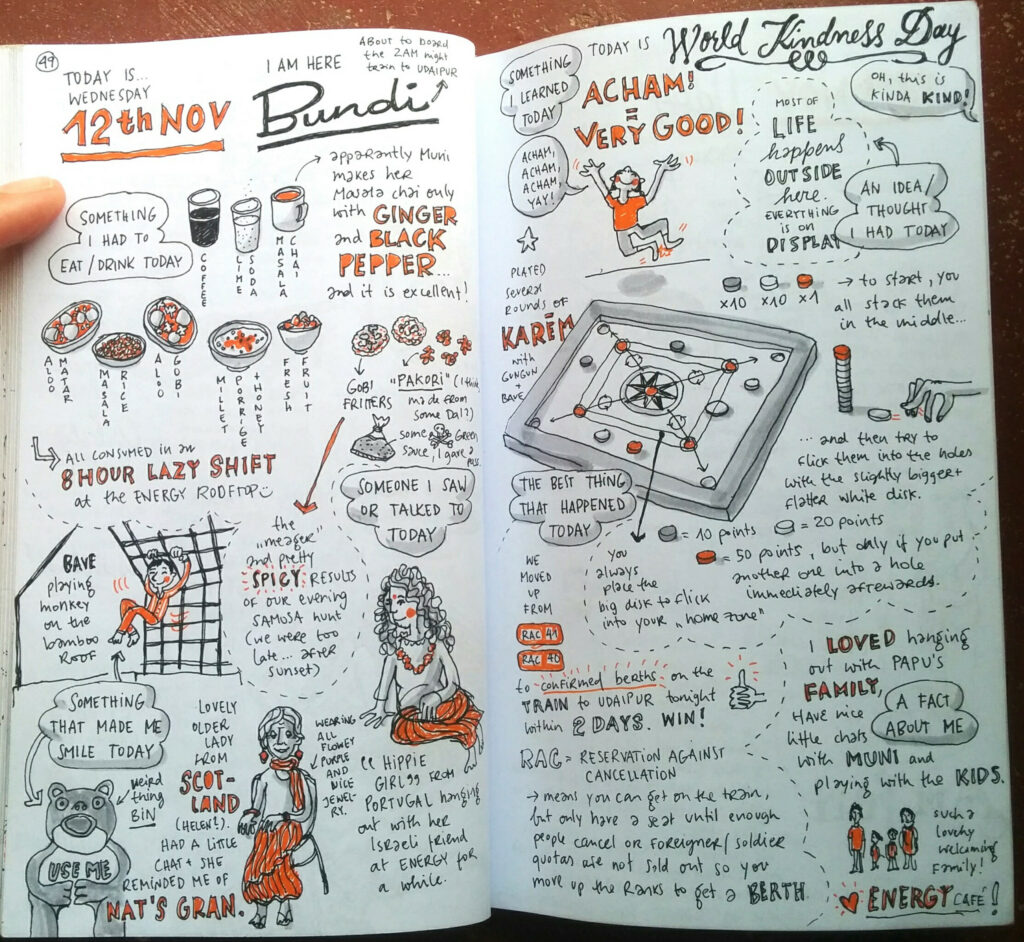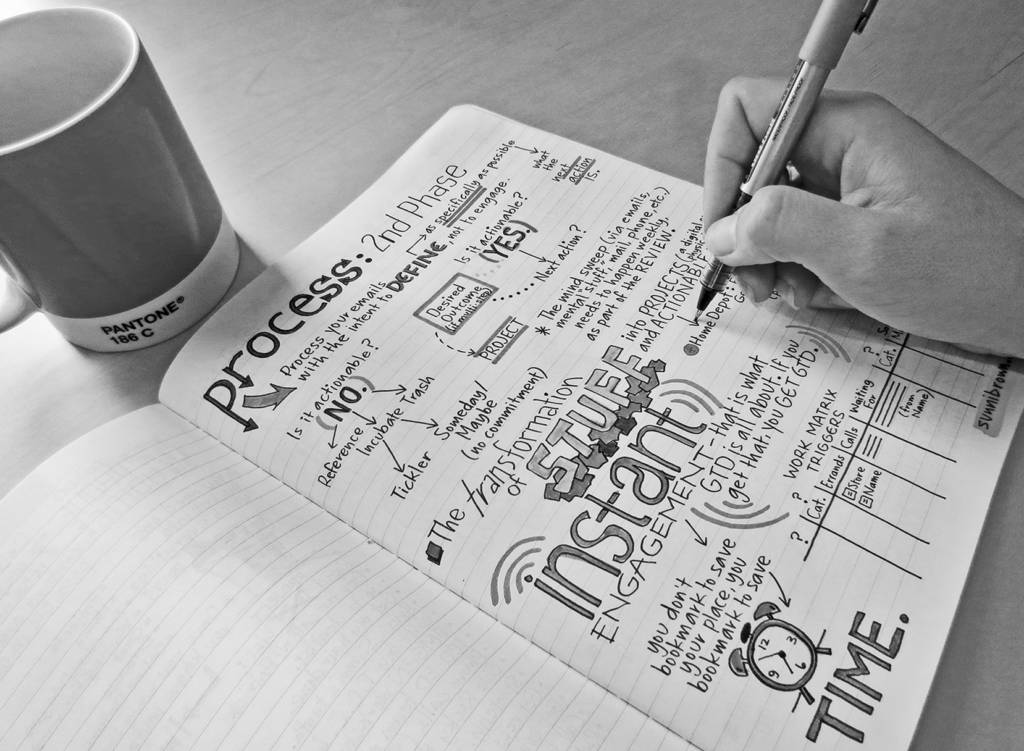Sketchnoting, everyone has already done it but everyone ignores it. Do you remember when you were in high school and you doodled on the corner of your paper while listening to the teacher? Yes, that's the principle of sketchnotes. They are visual notes concentrated on one page.
In the wake of Visual Thinking, sketchnoting is a practice based on rapid note taking. The two leaders of this movement are mike rohde et Eva Lotta Lamm. They give numerous conferences, write articles and publish books on the practice of Sketchnoting.

You can be bad at drawing and make great sketchnotes
A sketchnote is an improved diagram, a synthetic note, often monochrome or bichrome.
1 Sketchnote = titles + short texts + simple drawings + lines
You don't draw a sketchnote like a pretty drawing. It's more of a work in progress image. It serves to synthesize, using the fewest possible traits, concepts. Which means that people with a pencil complex can become remarkable sketchnoters. A sketchnote, even with a slightly hesitant stroke, is always useful for a project. By analogy, we could say that the sketchnote is the UX and the drawing the UI.
A sketchnote is sometimes better than a long speech
I have always used sketchnotes. To retain my Japanese vocabulary, to make French FLE lessons more fun, to make a travel diary, to communicate to my boss the basic functionalities of a website or even to transcribe live the words of my clients.
The sketchnote allows you to brainstorm, communicate and memorize. During a brainstorming workshop or during personal research, one can draw, compose and make diagrams. It helps to brainstorm, generate and synthesize ideas.

You can also hang a sketchnote next to the coffee machine or in a passageway to deliver an internal message. Like for example, look at our beautiful personas! Yes, yes, they are very useful to the project!
Sketchnotes are often used to visually transcribe seminars. Listening, synthesizing and transcribing a conference is an excellent way to retain key ideas.
Invest in good equipment to want to sketchnoter
- 1 Notebook: The important thing is to find a notebook without spirals, easy to open on a double page with, if possible, discreet lines (such as Muji, Hema, Moleskine, etc.);
- 1 black fine tip felt-tip pen (ex: Muji, Papermate, Staedler);
- 1 large light gray marker for Promarker-type shadows;
- 1 flashy felt-tip pen to contrast (Stabilo).
Let's get started! The basic elements of sketchnoter
At the risk of repeating myself, you don't need to be a drawing pro to make sketchnotes. First, you can practice making simple shapes (square, rectangle, triangle and circle). Have fun making them in different sizes and shading or coloring some.
A sketchnote does not need to transcribe all of the comments. Get used to writing more slowly to take care of your writing. It changes everything, I promise! To punctuate the texts a little, you can also have fun writing in capital letters, in detached letters, in bold, in relief or underlined. In short, anything goes!
Finally, a few simple lines separate ideas. You can use them without moderation.
Sketch like a pro: the magic library
To put a little fantasy in the basic elements, the ideal is to add evocative designs. You don't know how to draw? Do not panic. This site is a real bible: https://thenounproject.com/
Mike Rohde's trick is to use the last pages of his notebook as a library of icons. Little by little, you will master more and more graphic concepts and create professional sketchnotes!
Get started!
Go to Pinterest, FlickR or Google images. Type “Sketchnote” and copy a cool realization. It's okay if it's not as good as the original. Then, redo the sketchnote by replacing the content with yours. For example, you can make a persona, represent your day, make a report, a cooking recipe, etc.
It's done ? We would love to see the result! Share your sketchnote on Twitter with @UXRepublic.
kind in mind
- Anyone can make sketchnotes, it's not just for artists!
- Get inspired, copy, copy, copy.
- Practice is your friend. Always keep a small notebook with you.
- Enrich and regularly consult your magic library.
Marina Delcher / UX Designer
[actionbox color=”default” title=”” description=”UX-REPUBLIC is an agency specializing in user-centered design. We are also an approved training center. Find all our UX-DESIGN training courses on our website training.ux-republic.com” btn_label=”Our training courses” btn_link=”http://training.ux-republic.com” btn_color=”primary” btn_size=”big” btn_icon=”star” btn_external=”1″]

